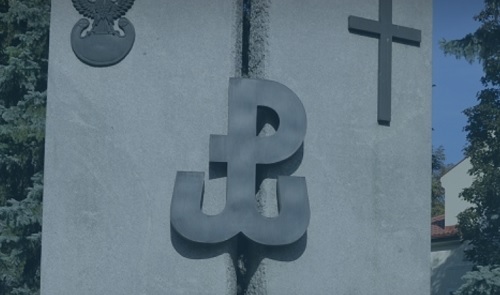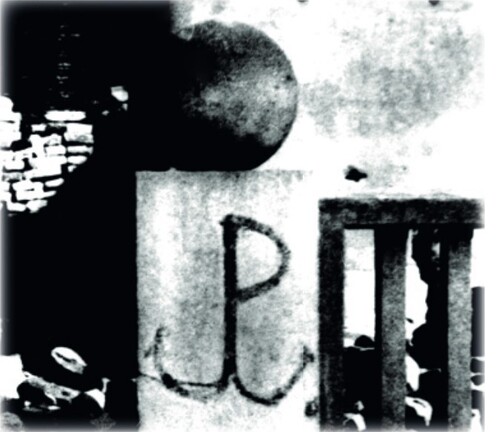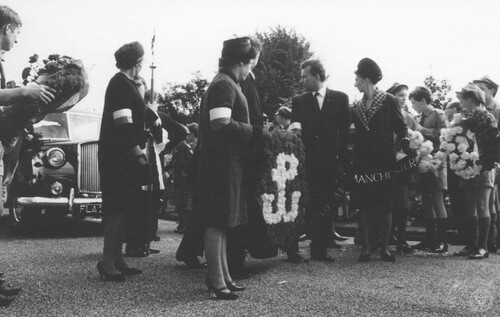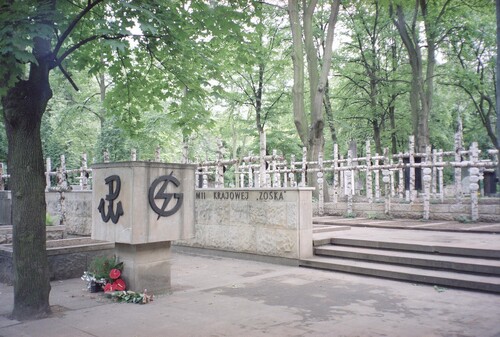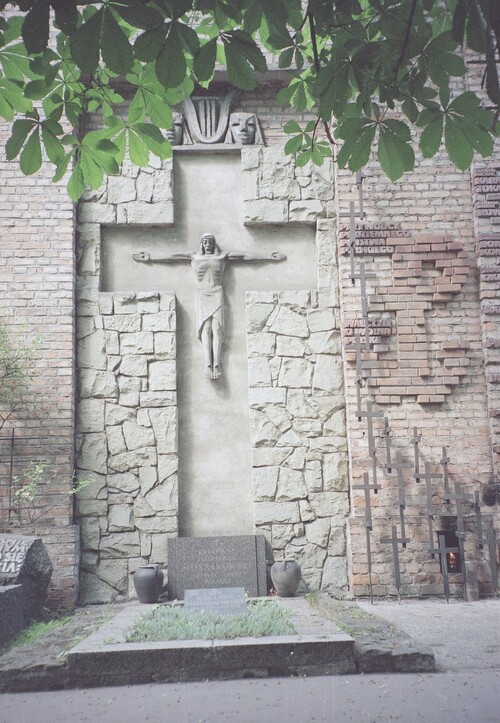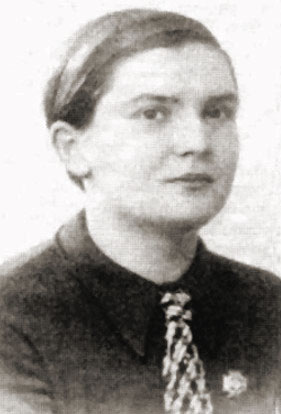“For a month now the symbol of an anchor is being painted on the walls of Warsaw. The drawing of an anchor is made in such a way that its upper part consists of the letter <<P>>, while its lower part — the letter <<W>> [Polska Walcząca — Fighting Poland; trans. annotation]. […] the symbol of an anchor took over the capital and possibly the entire country. Let it spread into the world!”
— wrote the “Informative Bulletin” of the Home Army on 16 April 1942. The one who painted the symbol next to the bakery was scout Aleksy Dawidowski, and, like every anchor after this one, it was painted according to rules of conspiracy.
Conspiracy competition
The symbol reflecting Poles’ hopes for victory owed its popularity to the members of the youth Minor Sabotage Organisation “Wawer” which was administratively under the Office for Information and Propaganda of the Headquarters of the Home Army: since spring 1942 it began appearing in Warsaw’s public space.
The monogram of the letters “P” and “W” was not circumstantial. To come up with an original, conspiracy symbol for Fighting Poland the Office for Information and Propaganda of the Warsaw District of the Home Army gathered a jury for a contest in January 1942. It consisted of Czesław Michalski codename “Jankowski” (the president of the jury); Aleksander Kamiński codename “Hubert” (editor-in-chief of the “Informative Bulletin” of the Home Army); Maria Straszewska codename “Emma” (member of the editorial office of the bulletin) and Anna Smoleńska codename “Hania” (the secretary of the jury).
Twenty seven works were sent to the commission, out of which two were selected. Apart from the anchor, the symbol which was also considered were two crossed swords – a symbol of the battle of Grunwald. In the end, the jury chose the anchor, which was announced to the conspiracy circles on April 16th 1942, in the aforementioned bulletin.
The first symbol of an anchor in occupied Warsaw painted on the wall of Lardelli’s bakery (photograph taken during the war)
Funeral of General Tadeusz Komorowski codename “Bór” at a cemetery in London, 2 September 1966. Photo from the collections of the Institute of National Remembrance
Anna Smoleńska “Hania”
Since the contest was organised according to the rules of conspiracy, the works were signed with codenames. It was later established that the co-author of the victorious symbol was Anna Smoleńska codename “Hania”, the daughter of chemist prof. Kazimierz Smoleński. Both her father and the rest of her family worked in conspiracy.
The co-author of the victorious symbol was Anna Smoleńska codename “Hania”. The Gestapo arrested her and her entire family on 3 November 1942. Anna was initially jailed at the Pawiak prison but was transported to the German Auschwitz concentration camp later that month. She died there on 19 March 1943.
Anna joined underground scouting in the beginning of 1942. She was a scout instructor of the Ochota District and an art history student at the secret University of Warsaw, as well as one of the writers for the “Informative Bulletin” of the Home Army and a liaison officer responsible for keeping contact with the families of the arrested freedom fighters. The Gestapo arrested her and her entire family on 3 November 1942. Anna was initially jailed at the Pawiak prison, but was transported to the German Auschwitz concentration camp later that month. She died there on 19 March 1943.
Warsaw Powązki Military Cemetery, 1997. Plot of the “Zośka” Home Army battalion. On the left the Fighting Poland symbol or the so-called anchor; on the right the symbol of the storm groups of the Gray Ranks. From the collections of the National Digital Archives (author: Grażyna Rutowska)
“Wawer” in action
The symbol reflecting Poles’ hopes for victory owed its popularity to the members of the youth Minor Sabotage Organisation “Wawer” which was administratively under the Office for Information and Propaganda of the Headquarters of the Home Army. In 1942 it counted around 200 people. Thanks to them, since spring 1942, the symbol began appearing on Warsaw’s public space — on walls, fences, information boards, electrical posts, tram stops and even as stamps on issues of the conspiracy occupation newspaper.
“We were just painting the anchor in the evening, at Myśliwiecka Street. I was holding a bucket of paint, while my friend was painting. There was an older lady approaching us, which our <<guards>> did not pay much attention to. As she came close, she suddenly shouted: Was machst du hier?! The painter, in his defence, simply painted on her with the brush. She obviously screamed! At the same time a car with some Germans was passing through, they jumped out with pistols as they heard her scream. In this dangerous situation, according to the rules of operation, the group of <<painters>> quickly <<retreated without casualties>>.”
-wrote Eugeniusz Tyrajski.
Warsaw Powązki Military Cemetery, 1996. The relief of Christ on a cross and the symbol of Fighting Poland, the so-called anchor, made from bricks. The sign says “Leaders of the Underground Polish State — they fought for a free Poland”. From the collections of the National Digital Archives (author: Grażyna Rutowska)
Anna Smoleńska. Photo from Wikimedia Commons/public domain
Author: ROKSANA SZCZYPTA-SZCZĘCH
